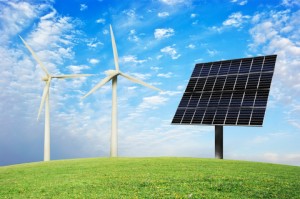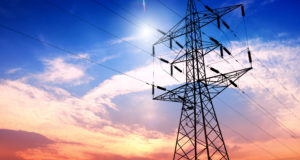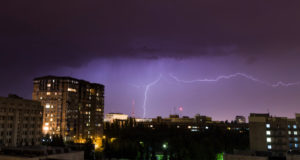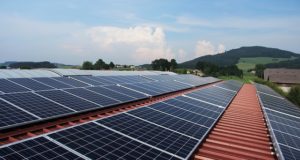 Separately, wind and solar energy are effective ways to power a home or a business but can be limited due to lack of sun or a sudden shift in wind velocity. Using a combination of these will provides a stable, higher energy output to power your home or business. These hybrid energy systems generally include a solar panel array and one or more wind turbines, and they create a more constant flow of power than either single source provides.
Separately, wind and solar energy are effective ways to power a home or a business but can be limited due to lack of sun or a sudden shift in wind velocity. Using a combination of these will provides a stable, higher energy output to power your home or business. These hybrid energy systems generally include a solar panel array and one or more wind turbines, and they create a more constant flow of power than either single source provides.
As with other off-grid systems, hybrid systems are connected to batteries to store power for use during times when the turbine and solar panels cannot produce enough energy. These systems can be specifically designed to meet particular household or business requirements by adding additional photovoltaic panels or wind turbines. As with standalone systems, care must be taken to properly place turbines and solar panels to allow them to function at maximum capacity.
Corporations searching for more stable sources of alternative energy are also investing in new combinations of wind and solar technology to power their office buildings and production facilities. Originally, alternative energy sources would be added as an afterthought, and only one form of energy would be utilized. Current large-scale hybrid systems offer sufficient power to allow even large corporations to save money while reducing dependence on the grid.
A wind and solar power combination is even being used to help power a wastewater treatment plant in New Jersey. When completed, the five wind turbines and a solar panel array will provide the facility with 8 megawatts of power. While this represents less than half the energy needed to run the facility, it demonstrates the potential for operating public infrastructure with the use of hybrid alternative energy systems.
The largest experiments with hybrid systems are being run in remote regions of India and on Pacific islands. Villages constructed in isolated locations have received hybrid wind and solar systems to provide a source of electricity in those areas. The systems operate well under a variety of conditions and are the first sources of power other than generators to be used in some of these locations. The load varies between villages as many had low electrical needs to start.
The test systems have demonstrated that small towns can be powered by independent equipment rather than requiring dependence on an electric grid. It is possible for small towns in the United States to utilize hybrid systems and provide their own power as well—the town’s year-round energy requirements must be documented and compared with the potential output of a hybrid system to determine if the system can provide sufficient power.
Future Possibilities
Researchers are studying how to streamline hybrid systems by combining components to better utilize space and materials. Adding photovoltaic panels to the base of a freestanding wind turbine can permit one structure to provide the same amount of power as the two independent structures would produce. The main drawback has been the design of the wind turbine: photovoltaic panels need to be angled up toward the sun to receive the maximum possible amount of light, and placing flat panels on the turbine’s tower base prevents them from working at their optimum capacity. Furthermore, using curved solar panels leaves certain sections in shadow during daylight hours.
Engineers are experimenting with a new format for solar panels: prisms. These photovoltaic cells are designed as pyramid structures rather than as flat panels. This type of configuration has the solar collectors inside the structure as opposed to on the surface. Sunlight passes in through each of the prism’s surfaces, and bounces around the interior collection cells. This form allows solar cells to absorb more light and produce greater amounts of power than traditional flat panels.
The prism shape can be constructed in any size, and a large-scale version could be used as the base of a wind turbine. This type of construction could free up land for more hybrid units that can then produce greater amounts of power. In theory, enough such units could power mid- to large-sized towns and cities, and not just homes and small businesses.
Useful Gadgets
The most unique and practical invention in the field of alternative hybrid systems is wind and solar-powered chargers for mobile devices. These handheld gadgets have an internal battery and can be left to charge in the sun or any windy area, and one version has the added option of connecting to an electric outlet if solar and wind power are not sufficient for a charge. Once fully charged, the hybrid device can recharge personal items such as cell phones and MP3 players through a USB connection. Alternative energy chargers that work solely from wind or solar are also available, but hybrid systems are more likely to provide a consistent charge for your personal mobile devices.
____________________________________________________________
_____________________________________________________________
 Off The Grid News Better Ideas For Off The Grid Living
Off The Grid News Better Ideas For Off The Grid Living




